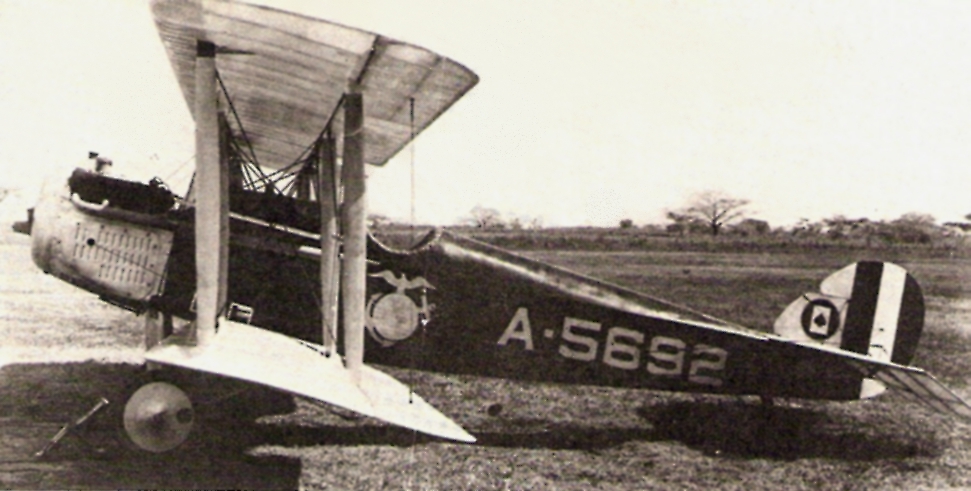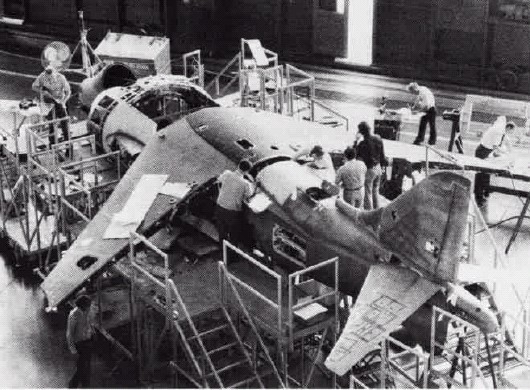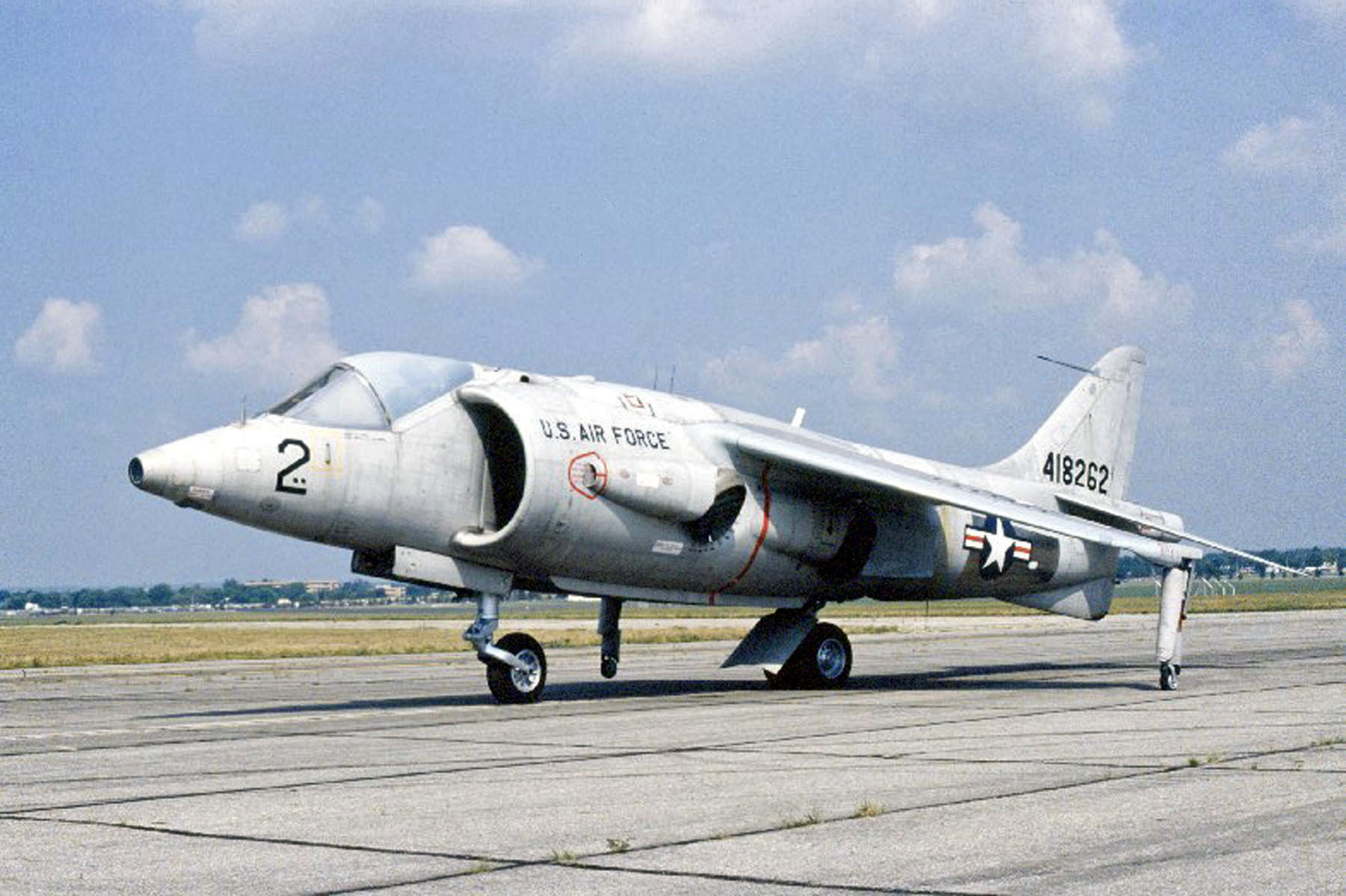|
Marine Attack Squadron 231
Marine Attack Squadron 231 (VMA-231) is a United States Marine Corps fixed wing attack squadron that consists of AV-8B Harrier (V/STOL) jets. The squadron, known as the "Ace of Spades", is based at Marine Corps Air Station Cherry Point, North Carolina and fall under the command of Marine Aircraft Group 14 (MAG-14) and the 2nd Marine Aircraft Wing (2nd MAW). History Early years VMA-231 began in Miami, Florida as the 1st Division, Squadron 1 on February 8, 1919 — a unit that emerged from the Northern Bombing Group of Northern France in 1918. By the end of February, the newly activated squadron arrived in San Pedro de Macorís, Santo Domingo for duty with the 2nd Brigade where it served until July 1924. During its deployment to Santo Domingo, the squadron was designated Marine Observation Squadron One (VO-1M) on 1 July 1922. The squadron's insignia, the famous Ace of Spades, was designed by then-2nd Lieutenant Hayne D. Boyden, a member of the squadron. The distinctive ... [...More Info...] [...Related Items...] OR: [Wikipedia] [Google] [Baidu] |
United States
The United States of America (U.S.A. or USA), commonly known as the United States (U.S. or US) or America, is a country primarily located in North America. It consists of 50 states, a federal district, five major unincorporated territories, nine Minor Outlying Islands, and 326 Indian reservations. The United States is also in free association with three Pacific Island sovereign states: the Federated States of Micronesia, the Marshall Islands, and the Republic of Palau. It is the world's third-largest country by both land and total area. It shares land borders with Canada to its north and with Mexico to its south and has maritime borders with the Bahamas, Cuba, Russia, and other nations. With a population of over 333 million, it is the most populous country in the Americas and the third most populous in the world. The national capital of the United States is Washington, D.C. and its most populous city and principal financial center is New York City. Paleo-Americ ... [...More Info...] [...Related Items...] OR: [Wikipedia] [Google] [Baidu] |
Battle Of Guadalcanal
The Guadalcanal campaign, also known as the Battle of Guadalcanal and codenamed Operation Watchtower by American forces, was a military campaign fought between 7 August 1942 and 9 February 1943 on and around the island of Guadalcanal in the Pacific theater of World War II. It was the first major land offensive by Allied forces against the Empire of Japan. On 7 August 1942, Allied forces, predominantly United States Marines, landed on Guadalcanal, Tulagi, and Florida in the southern Solomon Islands, with the objective of using Guadalcanal and Tulagi as bases in supporting a campaign to eventually capture or neutralize the major Japanese base at Rabaul on New Britain. The Japanese defenders, who had occupied those islands since May 1942, were outnumbered and overwhelmed by the Allies, who captured Tulagi and Florida, as well as the airfield – later named Henderson Field – that was under construction on Guadalcanal. Surprised by the Allied offensive, the Japanese made se ... [...More Info...] [...Related Items...] OR: [Wikipedia] [Google] [Baidu] |
F4U Corsair
The Vought F4U Corsair is an American fighter aircraft which saw service primarily in World War II and the Korean War. Designed and initially manufactured by Chance Vought, the Corsair was soon in great demand; additional production contracts were given to Goodyear, whose Corsairs were designated FG, and Brewster, designated F3A. The Corsair was designed and operated as a carrier-based aircraft, and entered service in large numbers with the U.S. Navy in late 1944 and early 1945. It quickly became one of the most capable carrier-based fighter-bombers of World War II. Some Japanese pilots regarded it as the most formidable American fighter of World War II and its naval aviators achieved an 11:1 kill ratio. Early problems with carrier landings and logistics led to it being eclipsed as the dominant carrier-based fighter by the Grumman F6F Hellcat, powered by the same Double Wasp engine first flown on the Corsair's initial prototype in 1940. Instead, the Corsair's early deploy ... [...More Info...] [...Related Items...] OR: [Wikipedia] [Google] [Baidu] |
SOC Seagull
The Curtiss SOC Seagull was an American single-engined scout observation seaplane, designed by Alexander Solla of the Curtiss-Wright Corporation for the United States Navy. The aircraft served on battleships and cruisers in a seaplane configuration, being launched by catapult and recovered from a sea landing. The wings folded back against the fuselage for storage aboard ship. When based ashore or on carriers the single float was replaced by fixed wheeled landing gear. Curtiss delivered 258 SOC aircraft, in versions SOC-1 through SOC-4, beginning in 1935. The SOC-3 design was the basis of the Naval Aircraft Factory SON-1 variant, of which the NAF delivered 64 aircraft from 1940. Design and development The SOC was ordered for production by the United States Navy in 1933 and first entered service in 1935. The first order was for 135 SOC-1 models, which was followed by 40 SOC-2 models for landing operations and 83 SOC-3s. A variant of the SOC-3 was built by the Naval Aircraft Factor ... [...More Info...] [...Related Items...] OR: [Wikipedia] [Google] [Baidu] |
O2U Corsair
The Vought O2U Corsair was a 1920s biplane scout and observation aircraft. Developed by Vought Corporation, the O2U was ordered by the United States Navy (USN) in 1927. Powered by a 400 hp (298 kW) Pratt & Whitney R-1340 engine, it incorporated a steel-tube fuselage structure and a wood wing structure with fabric covering. Many were seaplanes or amphibians. Design and development Two prototypes were ordered in 1926 and tested by the Navy Trial Board before the first production batches were ordered. In 1927, a total of 291 O2Us were produced. The O2U-2, -3 and -4 were ordered in 1928 with minor changes. By 1930 they were being superseded by the O3U which was basically similar to the O2U-4, one variant of which was fitted with the Grumman Float (nautical), float, and were manufactured until 1936. A total of 289 were built.Eden and Moeng 2002 Many of them had cowling, cowled engines and some had enclosed cockpits. Operational history The 600-690 hp (448-515 k ... [...More Info...] [...Related Items...] OR: [Wikipedia] [Google] [Baidu] |
Curtiss Falcon
The Curtiss Falcon was a family of military biplane aircraft built by the American aircraft manufacturer Curtiss Aeroplane and Motor Company during the 1920s. Most saw service as part of the United States Army Air Corps as observation aircraft with the designations O-1 and O-11, or as the attack aircraft designated the A-3 Falcon. United States Navy, U.S. Navy variants were used initially as fighter-bombers with the designation F8C Falcon, then as the first United States Marine Corps, U.S. Marine Corps dive bombers with the name Helldiver. Two later generations of Curtiss dive-bombers were also named Curtiss Helldiver (other), Helldiver. The type was introduced in 1925 and saw first-line service in the United States until 1934. Curtiss Falcons fought in the Constitutionalist Revolution of 1932 in Brazil, used by the forces of São Paulo. Design and development The Falcon XO-1 prototype was evaluated by the USAAC along with eleven other prototypes in 1924 and the Dougl ... [...More Info...] [...Related Items...] OR: [Wikipedia] [Google] [Baidu] |
Airco DH
The Aircraft Manufacturing Company Limited (Airco) was an early United Kingdom, British aircraft manufacturer. Established during 1912, it grew rapidly during the First World War, referring to itself as the largest aircraft company in the world by 1918. Airco produced many thousands of aircraft for both the British and Allied military air wings throughout the war, including fighter aircraft, fighters, trainer aircraft, trainers and medium bomber, bombers. The majority of the company's aircraft were designed in-house by Airco's chief designer Geoffrey de Havilland. Airco established the first airline in the United Kingdom, Aircraft Transport and Travel Limited, which operated as a subsidiary of Airco. On 25 August 1919, it commenced the world's first regular daily international service. Following the end of the war, the company's fortunes rapidly turned sour. The interwar period was unfavourable for aircraft manufacturers largely due to a glut of surplus aircraft from the war ... [...More Info...] [...Related Items...] OR: [Wikipedia] [Google] [Baidu] |
Vought VE-7
The Vought VE-7 "Bluebird" was an early biplane of the United States. First flying in 1917, it was designed as a two-seat trainer for the United States Army, then adopted by the United States Navy as its first fighter aircraft. In 1922, a VE-7 became the first airplane to take off from an American aircraft carrier.[Lloyd S. Jones, ''U.S. Naval Fighters'' (Fallbrook CA: Aero Publishers, 1977, ), pp. 11-13] Design and development The Lewis & Vought Corporation was formed just months after the U.S. entered World War I, with the intention of servicing war needs. The company's trainer was patterned after successful European designs; for instance, the engine was a Wright Hispano Suiza of the type used by the French Société Pour L'Aviation et ses Dérivés, Spads. In practice, the VE-7's performance was much better than usual for a trainer, and the Army ordered 1,000 of an improved design called the VE-8. However, the contract was cancelled due to the end of the war. However, the Navy ... [...More Info...] [...Related Items...] OR: [Wikipedia] [Google] [Baidu] |
SBD Dauntless
The Douglas SBD Dauntless is a World War II American naval scout plane and dive bomber that was manufactured by Douglas Aircraft from 1940 through 1944. The SBD ("Scout Bomber Douglas") was the United States Navy's main carrier-based scout/dive bomber from mid-1940 through mid-1944. The SBD was also flown by the United States Marine Corps, both from land air bases and aircraft carriers. The SBD is best remembered as the bomber that delivered the fatal blows to the Japanese carriers at the Battle of Midway in June 1942.Parker, Dana T. ''Building Victory: Aircraft Manufacturing in the Los Angeles Area in World War II,'' pp. 25–34, Cypress, CA, 2013. . The type earned its nickname "Slow But Deadly" (from its SBD initials) during this period. During its combat service, the SBD proved to be an excellent naval scout plane and dive bomber. It possessed long range, good handling characteristics, maneuverability, potent bomb load, great diving characteristics from the perforated dive b ... [...More Info...] [...Related Items...] OR: [Wikipedia] [Google] [Baidu] |
SB2U Vindicator
The Vought SB2U Vindicator is an American carrier-based dive bomber developed for the United States Navy in the 1930s, the first monoplane in this role. Vindicators still remained in service at the time of the Battle of Midway, but by 1943, all had been withdrawn to training units. It was known as the Chesapeake in Royal Navy service. Design and development In 1934, the United States Navy issued a requirement for a new Scout Bomber for carrier use, and received proposals from six manufacturers. The specification was issued in two parts, one for a monoplane, and one for a biplane. Vought submitted designs in both categories, which would become the XSB2U-1 and XSB3U-1 respectively. The biplane was considered alongside the monoplane design as a "hedge" against the U.S. Navy's reluctance to pursue the modern configuration.McKillop, Jack"Chance-Vought SB2U Vindicator" ''The Pacific War: The U.S. Navy''. Archived from the original aon 9 October 2007. The XSB2U-1 was of conventional lo ... [...More Info...] [...Related Items...] OR: [Wikipedia] [Google] [Baidu] |
AV-8B Harrier II
The McDonnell Douglas (now Boeing) AV-8B Harrier II is a single-engine ground-attack aircraft that constitutes the second generation of the Harrier family, capable of vertical or short takeoff and landing (V/STOL). The aircraft is primarily employed on light attack or multi-role missions, ranging from close air support of ground troops to armed reconnaissance. The AV-8B is used by the United States Marine Corps (USMC), the Spanish Navy, and the Italian Navy. A variant of the AV-8B, the British Aerospace Harrier II, was developed for the British military, while another, the TAV-8B, is a dedicated two-seat trainer. The project that eventually led to the AV-8B's creation started in the early 1970s as a cooperative effort between the United States and United Kingdom, aimed at addressing the operational inadequacies of the first-generation Hawker Siddeley Harrier. Early efforts centered on a larger, more powerful Pegasus engine to dramatically improve the capabilities of the H ... [...More Info...] [...Related Items...] OR: [Wikipedia] [Google] [Baidu] |
Hawker Siddeley Harrier
The Hawker Siddeley Harrier is a British military aircraft. It was the first of the Harrier series of aircraft and was developed in the 1960s as the first operational ground attack and reconnaissance aircraft with vertical/short takeoff and landing (V/STOL) capabilities and the only truly successful V/STOL design of that era. The Harrier was developed directly from the Hawker Siddeley Kestrel prototype aircraft, following the cancellation of a more advanced supersonic aircraft, the Hawker Siddeley P.1154. In the late 1960s, the Harrier GR.1 and GR.3 variants were ordered by the British government for the Royal Air Force (RAF). It was exported to the United States as the AV-8A, for use by the US Marine Corps (USMC), in the 1970s. During the Harrier's service the RAF positioned the bulk of the aircraft in West Germany to defend against a potential invasion of Western Europe by the Warsaw Pact forces; the unique abilities of the Harrier allowed the RAF to disperse their forces a ... [...More Info...] [...Related Items...] OR: [Wikipedia] [Google] [Baidu] |



.jpg)






